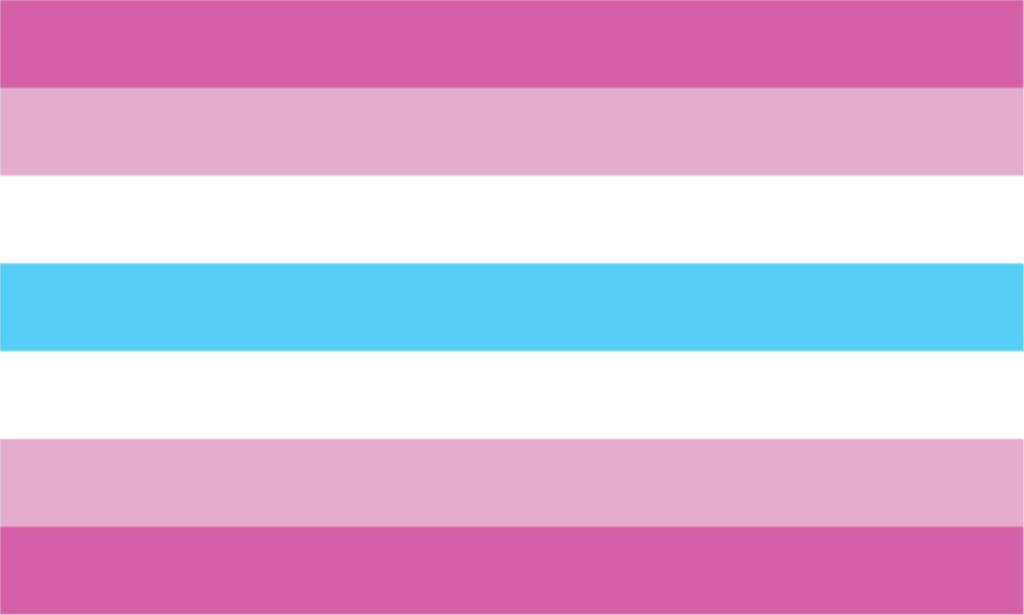Femboys
“Femboy” (/ˈfɛmbɔɪ/ ⓘ), also spelled “femboi”, is a term used to refer to male or non-binary individuals who express themselves in traditionally feminine behaviours. As an internet aesthetic, this may be through the use of jewellery, wearing feminine clothing and makeup, or expressing feminine behavioural qualities. Femboy can be used as both a sexual and non-sexual term; it does not denote a specific sexual orientation or gender role, but instead marks a form of gender variance.
The term originated in the 1990s as a slur, and has since spread and been popularised through internet forums and social media, particularly on TikTok, where trends such as “#femboyfriday” have received attention. In gender studies, the term has been used as an identifier for transgender individuals, and criticised as an expression of hegemonic masculinity. In porn studies, the term has been seen as an identifier for a submissive role in intercourse, and as exhibiting elements of sexual fantasy.
Etymology
The term femboy originated in the 1990s and is a compound from the words “fem” and “boy”.
“fem” is a abbreviation of “feminine” and “femme”.
The variant “femboi” uses the LGBT term “boi”, which had come to denote “a young, attractive gay man” by 2000.

Attributes
A 2022 analysis of the most followed male creators on TikTok identified the presence of typically feminine attributes, such as the use hair dye and jewellery, as popular. The paper found that that the platform’s top creators were “quite homogeneous… almost exclusively white, toned, and young, with perfect or near perfect facial symmetry and considerable bodily adornment“, seeing that the muscularity of femboys as differentiating them from the labels of “effeminate” or “gay”.[4]
A femboy may engage in cross-dressing[5] – garments associated with the femboy aesthetic include skirts, dresses, and knee high socks.[6][7] Jules Joanne Gleeson identifies 4chan femboys as “[o]ften but not always assisted by HRT”; the idealisation of a feminine form with a flat chest leads to some attempting gender transition with treatments such as bicalutamide. The element of youth associated with femboys has raised questions over the longevity of femboy status; in relation to male-to-female transgender people identifying as femboys, being a femboy can be a way to avoid the medical difficulties of transition. Gleeson also proposes the existence of the femboy as a method to escape both internal and external transphobia, alongside “the unique stigma” experienced by transgender women. She sees the femboy as a “self-made effeminate phenomenon” opposing traditional medical practise surrounding gender transition, and as an example of “the erratic state of contemporary gender relations”.[8]
Femboy is similar to the term “shemale” in that they both refer to individuals exhibiting masculinity and femininity simultaneously; they express femininity in a dainty manner without the presence of female sexual body parts, such as large breasts. Emerald Vaught sees femboys as encompassing both effeminate cisgender men, but also, despite this lack of corporeal femininity, bottoming transgender women. In pornography, she sees the femboy as sharing the idea of a “youthful appearance” with twinks and as “represent[ing] an element of sexual fantasy” of transgender femininity.[5]
Usage
Femboy refers to a male or non-binary person using aesthetically and culturally female elements to express gender identity;[6][9] Collins English Dictionary defines femboy as “a male whose appearance and behavioural traits are regarded as conventionally feminine”.[10] According to Dictionary.com, for example, the variant femboi” may refer to “softer” individuals, for example young trans men or butch lesbians.[1] Originally, the term was used as a pejorative against non-masculine men; it has since been reappropriated,[6] although it may still be used as a slur against trans women.[9] Femboy is a term of gender expression, and does not define the sexual orientation or gender identity of an individual.[11]
Along with terms like “sissy“, femboy is not used in a purely pornographic sense – it may be used to refer to a male involved in non-sexual cross-dressing or in transvestic fetishism.[5] The label femboy is used on platforms such as Tumblr to signify a gay sex role similar to that of a female in Western culture; it is related to terms such as “boywife” and “pussyboy” in its usage to denote “self-identified effeminate androphilic males who exclusively seek to be penetrated by dominant, masculine men”. Richard Vytniorgu argues that this sort of label “enables these bloggers to join together their sex-object choice, their sex role, and their gender nonconforming presentations in a form of subjectivity that others can identify with” and sees individuals using these labels as sharing a “bottom identity” with non-Western homosexuals.[12] Femboys have been fetishised, and femboy groups have been seen to be exclusionary in who they allow to participate, forming in-groups and out-groups.[13]
Presence
Femboy culture began to take shape in the United States in the 1990s. After the term was appropriated on the Internet, femboy communities began – by 2018, the term femboy was found almost exclusively on 4chan, especially on the /lgbt/ forum – the term has become popular on platforms such as Reddit and TikTok.[8][6] Reddit has hosted both sexual and non-sexual femboy content: “r/feminineboys” was started in 2012 and has seventy thousand members by September 2020; the site also contains the pornographic “r/FemBoys”.[13][14] TikTok has been said to be a safe space in allowing freedom of self-expression in gender variance;[15][16] Teri Lightning sees the platform as one of few spaces on the Internet where this is the case; she views the emergence of “#femboy” content on the platform as exemplifying the accepting attitude of younger generations towards gender variance.[16] The femboy aesthetic has been compared with figures popular culture such as Harry Styles;[4] viral trends such as “#FemboyFriday” and memes such as “Femboy Hooters” have helped to popularise the aesthetic.[6][14]
An unofficial femboy pride flag exists, which uses seven horizontal stripes, with the colours pink, light pink, blue, and white: these represent the feminine aesthetic, feminine behaviour, masculinity, and non-binary identities respectively.[11][17]
According to Aye Lei Tun, femboy culture was present in Myanmar’s Spring Revolution, protesting against the ruling military junta imposed after the 2021 coup d’état. In the protests, femboy outfits were encouraged to attract media attention, with gender-nonconforming outfits being worn by non-femboy protestors; Tun sees the introduction of femboy culture, which was previously unfamiliar to Myanmar, as being a tactic to lead towards a “social and cultural ideological revolution”.[18]

Reception
The femboy aesthetic has been praised for “breaking traditional norms of masculinity” and has been seen as demonstrating that “oppressive gender norms are slowly breaking down”[6][15] – on TikTok, the aesthetic has been seen in a generally positive light, although creators of femboy-style posts, especially non-white individuals, may receive homophobic comments and violent threats.[16]
Critics have seen femboys as perpetuating male dominance and disregarding existing discourse on gender identity.[4][19] An article by Marissa Lee in Mission criticised straight femboys for being involved in the conversation surrounding gender identity and for “claim[ing] responsibility for breaking such boundaries”: “Wearing a skirt as a famous straight cisgender man does next to nothing for the conversation surrounding gender fluidity. If anything, it emphasises the all-encompassing maleness.”[4] The “femboy aesthetic” of the most popular content creators on TikTok has been called “reenforc[ing] hegemonic masculine boundaries” due to the masculine boundaries it breaks relying on the sexualisation of women:[4]
When and if men cross gender boundaries, they do so while alluding to masculinities’ hegemonic qualities, paring their behaviours with lyrics and physical gestures that sexualise women and re-assert men’s virility, bravado, and strength as a form of heterosexual recuperation.
The alt-right have viewed the emergence of femboys a result of the LGBT chemicals conspiracy theory, alongside “the existence of gender-morphing frogs”; figures such as Guillaume Faye have called the “effeminisation” of society as an example of European societal decay.[20]




One Response
1st